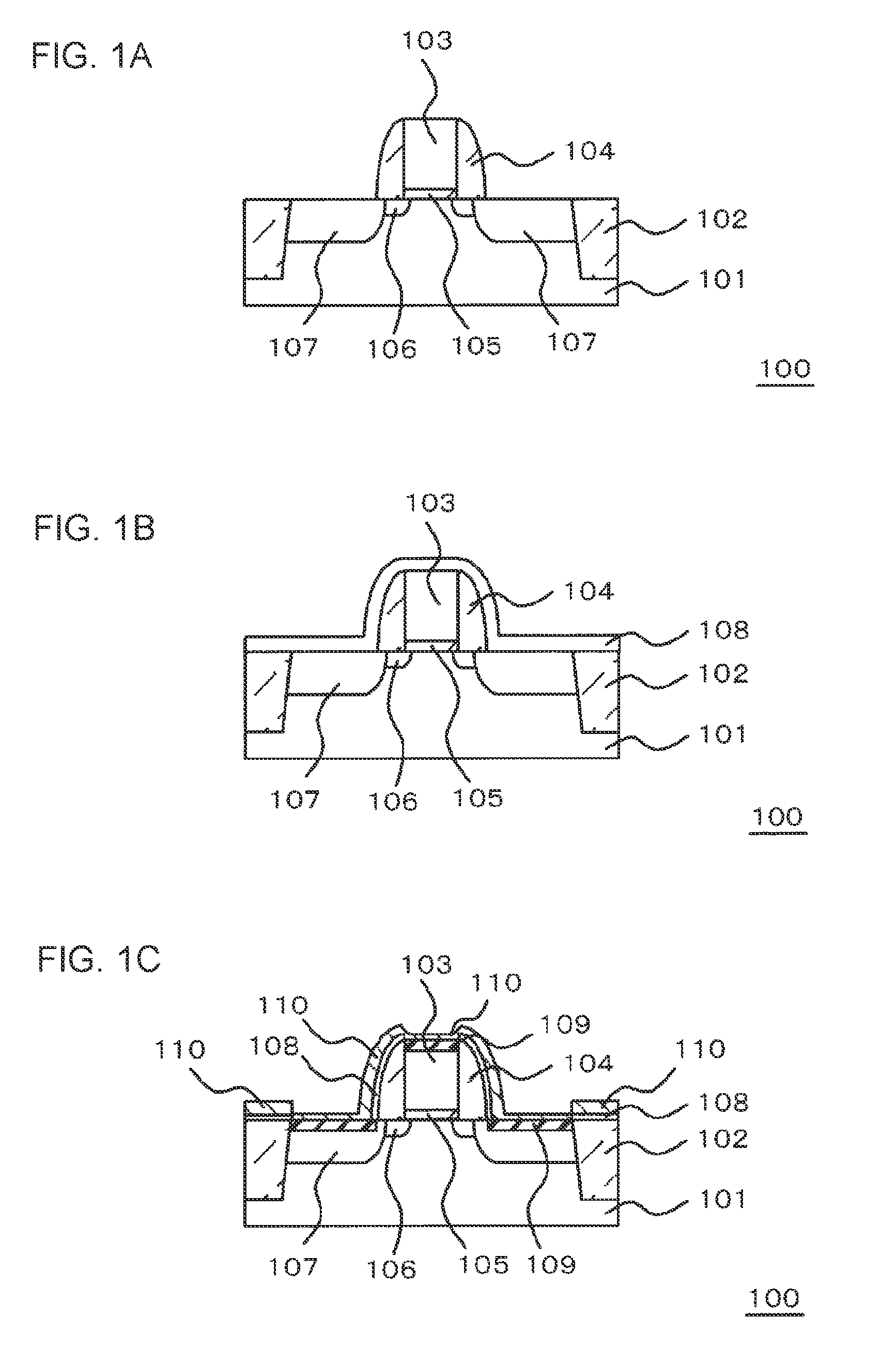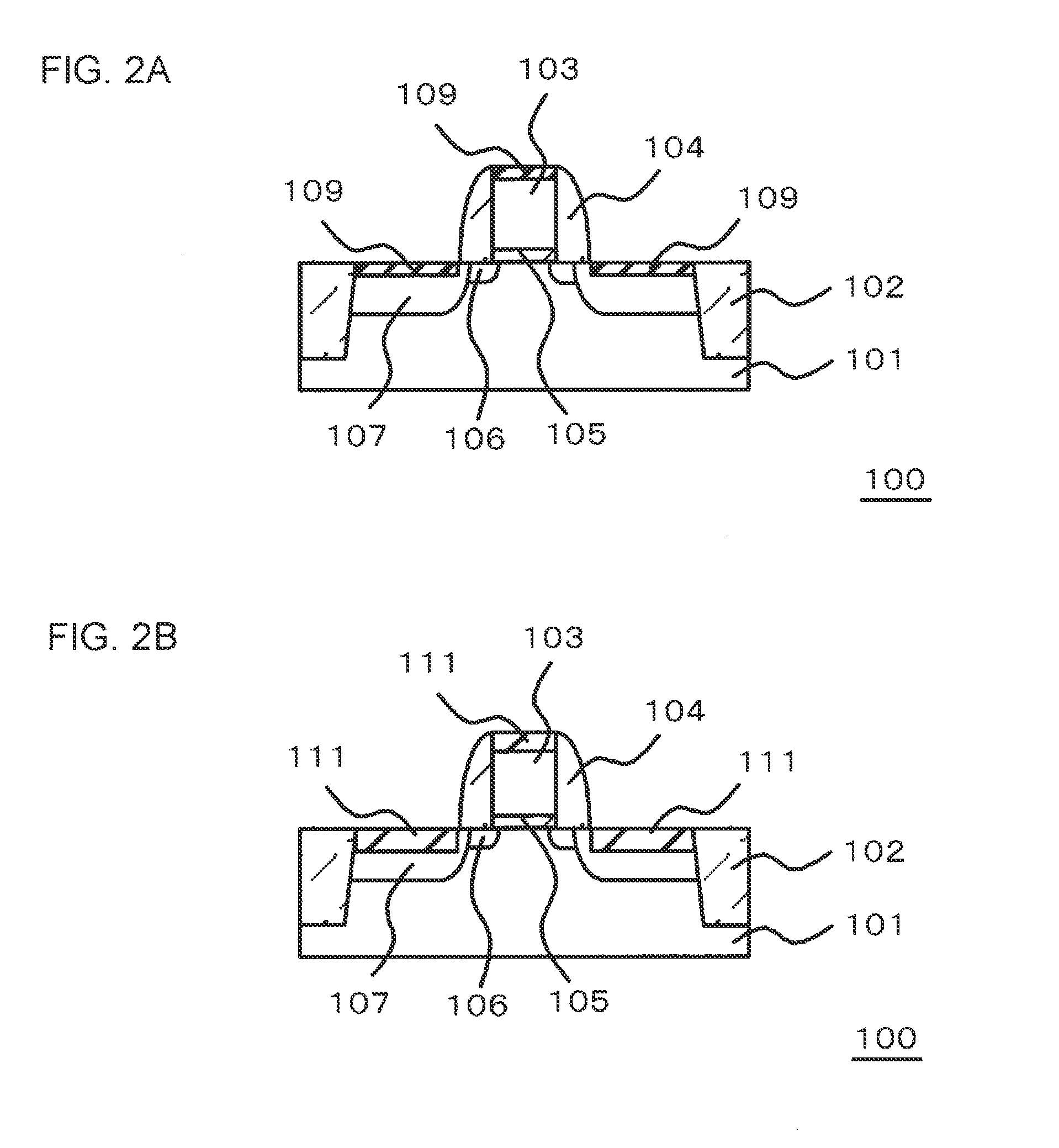Method of manufacturing semiconductor device
a manufacturing method and semiconductor technology, applied in the direction of semiconductor devices, basic electric elements, electrical appliances, etc., can solve the problems of deterioration of the uniformity of the sheet resistance, increase in and local formation of the silicide film on the surface, so as to prevent the variation of the sheet resistance of the silicide film and reduce the junction leakage current
- Summary
- Abstract
- Description
- Claims
- Application Information
AI Technical Summary
Benefits of technology
Problems solved by technology
Method used
Image
Examples
example)
(Example)
[0061]The second silicide film 111 was formed on the N-type source / drain region 107 by the same procedure as described in the above-mentioned embodiment, and the sheet resistance and the junction leakage current of the second silicide film 111 were measured.
[0062]Here, the first annealing was performed by the lamp annealing method, under the oxygen atmosphere (concentration of oxygen of 100%), at a temperature of 260° C., for 30 seconds. FIG. 3 shows the measurement result of the sheet resistance in a diffusion layer having a width of 1 μm (shown by (a) in the drawing). The horizontal axis in FIG. 3 denotes sheet resistance ([Ohm / Sq.]), and the vertical axis denotes cumulative probability ([%]). In addition, FIG. 4 shows the measurement result of the junction leakage current in a minute diffusion layer, having a width of equal to or less than 100 nm, which is adjacent to the gate electrode and the STI. The horizontal axis in FIG. 4 denotes the junction leakage current ([A])...
second embodiment
(Second Embodiment)
[0075]FIGS. 5A and 5B to FIGS. 7A and 7B are process cross-sectional views illustrating an example of the procedures for manufacturing the semiconductor device 100 according to the embodiment.
[0076]First, using a well-known method, the semiconductor element is created by forming, on the, silicon substrate 101, the STI 102 used as an element isolation insulating film, a gate electrode 103, the sidewall 104, the gate insulating film 105, the extension region 106, and the source / drain region 107. Meanwhile, the source / drain region 107 can be formed of materials such as SiGe and SiC. Next, a liner insulating film 120 and an insulating interlayer 122 are formed on the entire surface of the silicon substrate 101, and the insulating film is planarized by a chemical mechanical polishing (CMP) method (FIG. 5A). In the embodiment, the gate electrode 103 can be formed of, for example, a metal material.
[0077]Subsequently, using a photolithographic technique and a reactive ion...
PUM
| Property | Measurement | Unit |
|---|---|---|
| temperature | aaaaa | aaaaa |
| temperature | aaaaa | aaaaa |
| temperature | aaaaa | aaaaa |
Abstract
Description
Claims
Application Information
 Login to View More
Login to View More - R&D
- Intellectual Property
- Life Sciences
- Materials
- Tech Scout
- Unparalleled Data Quality
- Higher Quality Content
- 60% Fewer Hallucinations
Browse by: Latest US Patents, China's latest patents, Technical Efficacy Thesaurus, Application Domain, Technology Topic, Popular Technical Reports.
© 2025 PatSnap. All rights reserved.Legal|Privacy policy|Modern Slavery Act Transparency Statement|Sitemap|About US| Contact US: help@patsnap.com



